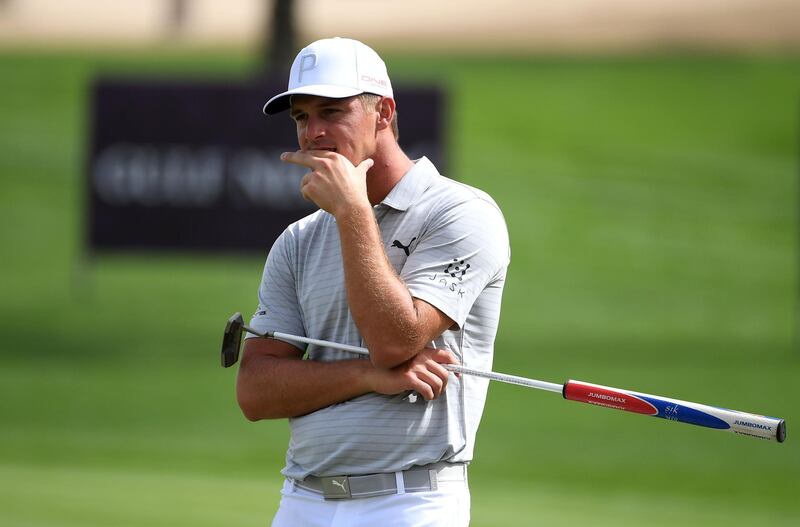Back in 2016, Bryson DeChambeau arrived in Dubai for the first time as a 22-year-old amateur, with irons all the same length, and an elaborate shtick about being a golfing scientist. Scepticism, it is fair to say, was plentiful.
Three years on, the American returns to the Omega Dubai Desert Classic as the highest-ranked player in the field. He is No 5 in the world. He has won five times on the PGA Tour in the time since – four of which have come within the past nine months. Clearly, there is a method to his madness.
“For me, it’s more about understanding the game at a whole other level that’s never really been done before,” DeChambeau said on the eve of the 2019 Classic. “What I want to achieve is different insight into all the different variables that go through you having to adjust properly to the course at hand.
“Like this week, it’s the greens.”
______________
Read more:
[ Here are the Dubai Desert Classic first round tee-times on Thursday ]
[ Flagstick rule receives mixed reaction from players in Abu Dhabi ]
[ Shane Lowry learns from US Open collapse to win in Abu Dhabi ]
______________
On his first trip to the UAE, DeChambeau finished in a share for 18th. Not bad for an amateur, you might think. A similar finish this time round would not, though, represent success for a player who is eager for a first win beyond the United States.
The key to succeeding, he says, is on the greens at the Majlis.
“It’s taken us a little bit,” he said. “That's the reason why I struggled with putting when I came here three years. But now I think I have a better understanding of why that happened.
“It's trying to understand the variables more and more. That's really my goal of what I want to do each and every week.”
And, he says, he has worked out a formula for success on the greens at the Emirates Golf Club. “Yes, I have, and I'm not going to say,” he said. “That's part of the secret sauce.”
Played the front nine today @EmiratesGC and took in the views on 8. The course and it’s views are 👌🏻 this week. @OMEGAGolfDubai @EuropeanTour pic.twitter.com/WEOijmo31x
— Bryson DeChambeau (@b_dechambeau) January 23, 2019
Since the start of this year, DeChambeau has had scope to push the boundaries even further. Changes in golf’s rule book mean players are searching for new, efficient ways to help shoot low scores. For those applying science to fine the extra one per cent, it is an intriguing time.
“I'm always trying to gain a little bit of an edge in the rules,” DeChambeau said. “I'm not trying to go beyond the rules by any means, but just trying to go to the extent of it like everyone should be. If you're trying to be the best, why not?”
Most obviously, players can now putt with the flag still in the hole, should they so wish. Most remain doubtful.
In Abu Dhabi last week, for example, the popular method was to continue to take the flag out on all but the long-range putts.
Be there for the 30th anniversary of the #OmegaDubaiDesertClassic
— OMEGA Golf Dubai (@OMEGAGolfDubai) January 22, 2019
Limited tickets are still available
1️⃣ AED 75 per day
4️⃣ AED 250 for a 4 day season pass
✨ From AED 795 fully inclusive hospitality per day
🎟 https://t.co/oVQs0jg35D#ODDC2019 #MadeForGreatness #Dubai #MyDubai pic.twitter.com/Nup5kE9ajD
“I think from long range, I will use the pin in because I think it's nice, it gives you a little bit better view of the hole,” Sergio Garcia, the 2017 Classic champion, said.
“When it comes down to things inside 30, 35 feet for me, it’s going to be pin out every single time.”
DeChambeau, though, takes a different view. “Pin in, is an easy one,” DeChambeau said. “It's statistically proven to be a benefit in 99 per cent of situations.
“The only times where I'll pull it out is where if the shadow is right in my line because the flag is moving or there's too much wind and you can hear the flag, pull it back, not a big deal.
“But anything outside 10 feet I'm going to leave it in. If I accidentally hit it three feet instead of two feet past the flag, it will stay in the cup. It has a better potential of staying in the cup than with it out.”






